(54 products available)















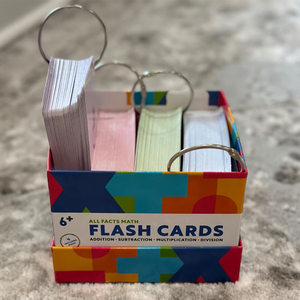
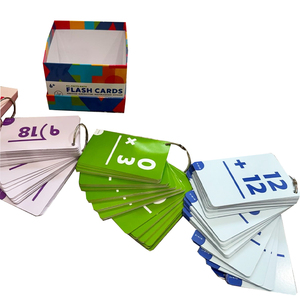
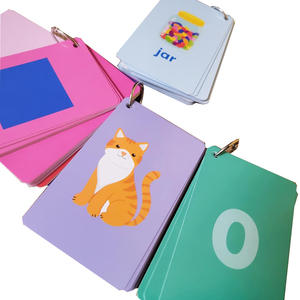
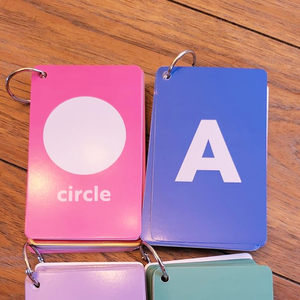

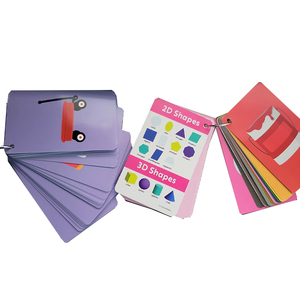



























































































































































































































Wild animals' flashcards can be found in different varieties that cater to unique educational methods and requirements. Below is a list of some of the common types:
Picture Flashcards
Picture flashcards are an essential tool for teaching young children the names of various wild animals. These cards are usually accompanied by images that are visually appealing and easy to recognize. In most cases, these cards are used to help children build their vocabulary. Additionally, they can be used for other purposes such as games and even as learning aids. Usually, the cards feature the names of the animals at the bottom or the top of the card. This makes it easier for the children to associate the names with the corresponding images.
Fact Flashcards
Fact flashcards are critical educational tools for older children who are interested in learning more about wild animals. Typically, they feature a combination of images, names, and other important details such as habitat, diet, and behavior. This equips children with comprehensive knowledge about different types of wildlife. Moreover, the cards can be used as teaching resources for subjects like geography and sciences. Additionally, they can be used for research purposes. Essentially, they offer a more detailed and nuanced understanding of animals as compared to the picture flashcards.
Memory Game Flashcards
Memory game flashcards are specially designed to promote interactive and fun learning sessions. Typically, they come in pairs with matching images and names, allowing children to play memory matching games. This helps in improving their memory and cognitive skills. Moreover, they can be used in social settings like classrooms or during playdates. This helps the children to develop their communication skills and have a better understanding of wild animals in a more engaging manner.
Interactive Flashcards
These are high-tech flashcards with audio features. Every time they are scanned, they play the sounds of the respective animals or read out their names. This provides an interactive learning experience that engages multiple senses.
Mini-Flashcards
These are smaller versions of standard flashcards. They are portable and can easily fit into a child's hand or a small bag. Mini flashcards are ideal for on-the-go learning sessions.
Wild animal flash cards are versatile educational tools that can be used in various scenarios to facilitate learning, play, and exploration of wildlife themes. Here are some key usage scenarios:
Selecting the suitable wild animal flashcards can make learning more enjoyable and effective. Here are some factors business owners should consider when stocking these cards.
Age Appropriateness
Flashcards are available in various difficulty levels, suitable for different age groups. Buyers should get cards that are suitable for their children's age group. For instance, younger children will need cards with simple words and clear pictures. At the same time, older children will benefit from cards with more complex information.
Educational Value
Business owners should look for flashcards that offer high educational value. Such cards will have correct and detailed information about the various wild animals. They should also have features that promote active learning such as questions or interactive elements.
Quality of Material
The material quality of flashcards will affect their durability and overall usability. Ideally, buyers should get cards made of sturdy and thick materials that can withstand regular handling. Moreover, the cards should have a smooth finish to ensure easy shuffling and storage.
Design and Visual Appeal
Visual appeal is an important aspect that influences children's interest and engagement. Therefore, business owners should look for flashcards with vibrant colors and eye-catching illustrations. Additionally, the design should be age-appropriate and suitable for the target audience.
Versatility
Versatile flashcards can be used for multiple learning activities and games. Consequently, buyers should get cards that can serve various purposes such as matching games, quizzes, or storytelling. Such cards will enhance their children's creativity and keep them engaged for many hours.
Theme and Content
Wild animal flashcards come with different themes and content. Depending on their customers' needs, buyers can get cards that focus on specific regions or categories of wild animals. Ideally, the cards should cover a wide range of species to enhance learning diversity.
Ease of Storage
Normally, flashcards can easily get lost or disorganized. Therefore, buyers should look for cards that come with a storage solution such as a box or pouch. This will ensure the cards are well organized and protected when not in use.
Wild flashcards are designed with several features that provide educational value while being fun and engaging. Here are some features, functions, and designs of flashcards:
Illustrations and Pictures
Wild animal pictures on flashcards are very useful because they make it easy for children to identify and learn about different animals. The images are clear and vivid, which makes them very appealing to young children. In addition, seeing pictures of animals they are familiar with can help children make connections and understand new concepts more easily.
Also, the illustrations help children understand the meaning of words and phrases they are learning. For example, if a child sees a picture of a lion on a flashcard while learning about lions, they will quickly understand what a lion is. Moreover, the visuals on the cards stimulate children's brains and help them remember what they have learned for a long time.
Durable Material
Wild animal flashcards are often made with materials that are durable, such as laminated cardstock or plastic. This makes them resistant to wear and tear, so they can be handled by young children without damage.
Because flashcards are made with sturdy material, they can be used for a long time and passed on to other generations. Their edges are rounded to prevent children from getting hurt while playing with the cards.
Interactive Elements
Some wild animal flashcards have interactive elements, such as textures to touch, flaps to lift, or augmented reality features. These elements make learning more engaging and help children explore and discover in a hands-on way.
Educational Content
Wild animal flashcards are designed to be educational, with content that supports early learning goals. They often include facts, vocabulary words, and prompts that encourage conversation, storytelling, and language development.
Versatile Usage
Wild animal flashcards are versatile and can be used in various ways. Parents and teachers can use them for matching games, memory games, quizzes, or as conversation starters. They can also be used to create custom learning activities and adventures.
Organized Storage
Wild animal flashcards often come with a storage box or pouch to keep them organized and protected when not in use. This makes them easy to store, transport, and access.
Q1: What are wild animal flashcards?
A1: Wild animal flashcards are educational tools designed to help children learn about different animals that inhabit various ecosystems. These cards usually feature an animal on one side, accompanied by its name and other relevant details, such as habitat, diet, or behavior. They can be used for games, presentations, or as supplementary learning materials.
Q2: What age group are wild animal flashcards suitable for?
A2: While flashcards can be used by children of all ages, those in preschool and early primary school (three to seven years) will benefit most. At this stage, kids are keen on learning new words and are able to identify various animals.
Q3: How can wild animal flashcards be used in classrooms?
A3: Wild animal flashcards can be used in various ways in classrooms. For instance, teachers can organize matching games where students pair the animal with its name. They can also conduct quiz activities to test students' knowledge about different animals. Furthermore, the cards can be used to introduce new vocabulary, making them excellent tools for language development.
Q4: What are some key features to look for in wild animal flashcards?
A4: When purchasing wild animal flashcards, some features to look for include durability and size of the cards. Ideally, they should be made of high-quality cardstock, which is sturdy enough to withstand repeated handling by kids. Additionally, the cards should be of a suitable size for small children's hands to hold and shuffle easily. Buyers should also ensure the cards have clear images and informative text.
Q5: Can wild animal flashcards be used for other educational purposes?
A5: Yes, wild animal flashcards can be used for other educational purposes. For example, they can be used to teach children about environmental conservation and the importance of wildlife protection. This can be done through discussions about the threats that various animals face and how kids can help in conservation efforts. Additionally, the flashcards can be used as tools for creative storytelling and imagination activities.